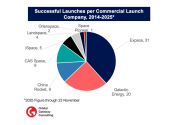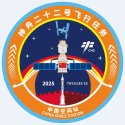Shiyan-21 got launched today. It seems like the launch pace has gotten significantly faster in this past few months.
You are using an out of date browser. It may not display this or other websites correctly.
You should upgrade or use an alternative browser.
You should upgrade or use an alternative browser.
China's Space Program Thread II
- Thread starter Blitzo
- Start date
The Russian Scientific Research Center for Space Hydrometeorology “Planeta” has begun receiving and processing data from the Chinese polar-orbiting satellite FengYun-3D, as well as providing users with information products based on these data. The system is used as a core state platform for supplying information to federal authorities and other users, as well as for fulfilling Russia’s obligations in the field of international data exchange.
Attachments
It’s just your perception that China has low risk resilience. China simply conducts meticulous scrutiny to determine whether there are issues in the design or execution of technical solutions—whether some technical miscalculations occurred or deviations emerged during manufacturing. Do not mistake scientific prudence for a lack of risk resilience. There was indeed a period in China’s defense sector when political considerations overshadowed scientific ones, or when economic priorities necessitated compromises in certain R&D endeavors. But that era has long passed.Recreating this is impossible in China because the risk tolerance is minimal. Too much scrutiny.
You perceive reasonable criticism as an attack on SpaceX. In Chinese culture and education, everything has both positive and negative aspects—what is good should be praised, and what is wrong should be criticized.Belittling quantifiable achievements by SpaceX and others should not be sexy. Raptor v3 and v4 being quite good wrt to thrust, twr, and isp is non deniable. New booster recovery system engineering, stainless steel based construction and its optimization, heat resistant tile manufacturing and optimization, stage separation system, and others. These innovations came through heavy investment, building skillset of thousands of workers and engineers, and it build very broad and deep institutional skills and experience. It is therefore more than likely that the starship program will be optimized further to launch large sized payloads and male it a reliable super heavy platform.
SpaceX has excelled in the design of many subsystems within the Starship project. However, its overall design clearly has issues.
The correct approach is to acknowledge what it has done right (without the need to repeat it incessantly—this isn't pledging allegiance to an emperor, where one must extol the other's achievements in every statement) while criticizing its mistakes.
The reason you might notice more criticism than praise is that the core issue lies in the other party's unwillingness to change. Everyone focuses on the points of disagreement, whereas areas of consensus naturally don't need to be reiterated every time.
Regarding the "Brilliant Pebbles" concept, it's best to take it with a grain of salt. Here’s why:First, China’s current hypersonic weapons primarily operate in the near-space region below 100 km, without leaving the atmosphere. This flight profile makes them inherently difficult to intercept using space-based systems.As for Soviet-era ballistic missiles, their trajectories reached altitudes of 800–1,200 km—far outside the operational plane of a Brilliant Pebbles-style constellation. Given the vast territory of the Soviet Union, deploying a few hundred orbital interceptors would have been futile: the engagement time, velocity vector alignment, and interceptor maneuverability would all have been severely insufficient.Brilliant Pebbles planned for 10,000 interceptors, with hundreds over the USSR at any time.
Each pebble was expected to be less than 40kg, so that's 400 tonnes in total.
These days, even larger constellations are feasible, given the launch costs of reusable rockets.
The cost of the interceptors is another question however
Guys I have been reading a lot of comparison how it only took CNSA 9 days to get the taikonauts back on earth while it took NASA the infamous nine months to save the two astronauts from ISS. While this is pretty telling, is it a perfectly fair comparison? Because unlike NASA, CNSA did not have launch an extra mission to get Shenzhou20 back on Earth, since there already was the Shenzhou21 module attached to Tiangong. Wouldn't it be more telling how fast can CNSA launch Shenzhou22, in regards to the NASA failure?
I am not trying to take a position here, just wanna make clear of something I do not yet know enough about, thx for any explanations.
I am not trying to take a position here, just wanna make clear of something I do not yet know enough about, thx for any explanations.
It's political, Boeing didn't want to be seen as having stranded their two crew on the ISS and needed SpaceX's Dragon to rescue them. If NASA ignored Boeing on this and immediately made the call for SpaceX to go ahead and use the next available Dragon to fetch Starliner's crew and do so with all possible haste then it wouldn't have taken 9 month.Guys I have been reading a lot of comparison how it only took CNSA 9 days to get the taikonauts back on earth while it took NASA the infamous nine months to save the two astronauts from ISS. While this is pretty telling, is it a perfectly fair comparison? Because unlike NASA, CNSA did not have launch an extra mission to get Shenzhou20 back on Earth, since there already was the Shenzhou21 module attached to Tiangong. Wouldn't it be more telling how fast can CNSA launch Shenzhou22, in regards to the NASA failure?
I am not trying to take a position here, just wanna make clear of something I do not yet know enough about, thx for any explanations.
We don’t have enough information about the problem itself or about the decision-making system in this kind of situation. But it is known that the CNSA can launch a backup spacecraft within 8.5 days in an emergency. In this case, the timeframe is longer, possibly because the situation has not been classified as an emergency.Guys I have been reading a lot of comparison how it only took CNSA 9 days to get the taikonauts back on earth while it took NASA the infamous nine months to save the two astronauts from ISS. While this is pretty telling, is it a perfectly fair comparison? Because unlike NASA, CNSA did not have launch an extra mission to get Shenzhou20 back on Earth, since there already was the Shenzhou21 module attached to Tiangong. Wouldn't it be more telling how fast can CNSA launch Shenzhou22, in regards to the NASA failure?
I am not trying to take a position here, just wanna make clear of something I do not yet know enough about, thx for any explanations.
Commercial divisions of SOE - in the overwhelming majority.
Huge news from China... China is going to send 4 batch of sophisticated satellites within 5 years, which are as follows:
1) Project Hongmeng. A telescope array consisting of 10 satellites will be sent to dark side of moon. Avoiding the noise from sun & earth, this could be a perfect place to listen tiny signals from deep space, will help to decode what happened between the Big Bang & the first sun emerges.
2) Project Kuafu II. Directly looking at the sun like a high-altitude photographer, it will orbit over the polar regions of the sun for the 1st time internationally. The North & South Poles lie the ultimate secret of solar magnetic field activity, understanding it will help to predict the arrival of solar storms earlier and better.
3) Find Earth 2.0. The satellite will search the habitable zone, trying to locate a planet sized like earth. Perhaps in the near future, it will point us to a second home that humans have long dreamed of.
4) A space observatory called eXTP will be sent outside Earth's atmosphere. Its mission is to observe the "extreme forbidden zones" in the universe, such as the edges of black holes' event horizons and the hot surfaces of neutron stars. There, gravity is enough to tear apart the structure of spacetime, and the magnetic field strength is trillions of times that of Earth. eXTP is like a top physicist, delving into these extreme laboratories to test Einstein's predictions, explore the boundaries of physics, and conduct cosmic level experiments that cannot be achieved on Earth.
1) Project Hongmeng. A telescope array consisting of 10 satellites will be sent to dark side of moon. Avoiding the noise from sun & earth, this could be a perfect place to listen tiny signals from deep space, will help to decode what happened between the Big Bang & the first sun emerges.
2) Project Kuafu II. Directly looking at the sun like a high-altitude photographer, it will orbit over the polar regions of the sun for the 1st time internationally. The North & South Poles lie the ultimate secret of solar magnetic field activity, understanding it will help to predict the arrival of solar storms earlier and better.
3) Find Earth 2.0. The satellite will search the habitable zone, trying to locate a planet sized like earth. Perhaps in the near future, it will point us to a second home that humans have long dreamed of.
4) A space observatory called eXTP will be sent outside Earth's atmosphere. Its mission is to observe the "extreme forbidden zones" in the universe, such as the edges of black holes' event horizons and the hot surfaces of neutron stars. There, gravity is enough to tear apart the structure of spacetime, and the magnetic field strength is trillions of times that of Earth. eXTP is like a top physicist, delving into these extreme laboratories to test Einstein's predictions, explore the boundaries of physics, and conduct cosmic level experiments that cannot be achieved on Earth.



